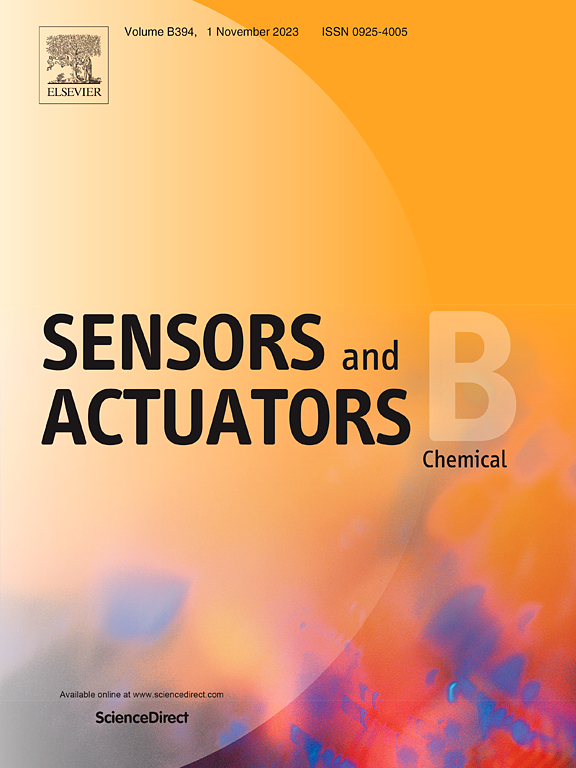异质结构NixFe3-xO4复合材料用于亚ppm丙酮检测
IF 3.7
1区 化学
Q1 CHEMISTRY, ANALYTICAL
引用次数: 0
摘要
丙酮是呼气分析诊断糖尿病的重要生物标志物。然而,制造具有所需气体传感能力的金属氧化物半导体传感器用于亚ppm丙酮检测仍然是一个重大挑战。在本研究中,采用简单的一步溶剂热法和煅烧后处理,有效地制备了具有不同Ni浓度的异质结构NixFe3-xO4复合材料。基于NixFe3-xO4复合材料的传感器由于形成独特的微观结构和大量的活性位点,对50 ppm丙酮具有优异的气敏性能。值得注意的是,最优Ni0.8Fe2.2O4传感器即使在亚ppm水平也具有显著的灵敏度,在0.1-5.0 ppm丙酮浓度范围内具有良好的单调递增响应(R2 = 0.994)。此外,在Ni0.8Fe2.2O4传感器中观察到健康个体和模拟糖尿病患者的呼出样本之间存在明显的信号响应,这意味着NixFe3-xO4复合材料为糖尿病诊断的实际呼气分析中有效检测丙酮提供了一种新的替代策略。本文章由计算机程序翻译,如有差异,请以英文原文为准。
Heterostructured NixFe3-xO4 composites for sub-ppm acetone detection
Acetone is a crucial biomarker of diabetes diagnosis by breath analysis. However, the fabrication of metal oxide semiconductor-based sensors with the desired gas-sensing abilities for sub-ppm acetone detection remains a significant challenge. In this study, heterostructured NixFe3-xO4 composites with varying Ni concentrations were effectively developed using a simple one-step solvothermal process followed by post-calcination treatment. The sensor based on NixFe3-xO4 composites exhibited excellent gas sensing performance toward 50 ppm acetone due to the formation of unique microstructures and numerous active sites. Notably, the optimum Ni0.8Fe2.2O4 sensor demonstrated remarkable sensitivity even at sub-ppm levels, showing good monotonically increasing response (R2 = 0.994) within the concentration range of 0.1–5.0 ppm acetone. Moreover, distinct signal responses between exhaled breath samples from a healthy individual and a simulated diabetic patient were observed in the Ni0.8Fe2.2O4 sensor, implying that the NixFe3-xO4 composites provided an alternative novel strategy for the effective detection of acetone in actual breath analysis of diabetes diagnosis.
求助全文
通过发布文献求助,成功后即可免费获取论文全文。
去求助
来源期刊

Sensors and Actuators B: Chemical
工程技术-电化学
CiteScore
14.60
自引率
11.90%
发文量
1776
审稿时长
3.2 months
期刊介绍:
Sensors & Actuators, B: Chemical is an international journal focused on the research and development of chemical transducers. It covers chemical sensors and biosensors, chemical actuators, and analytical microsystems. The journal is interdisciplinary, aiming to publish original works showcasing substantial advancements beyond the current state of the art in these fields, with practical applicability to solving meaningful analytical problems. Review articles are accepted by invitation from an Editor of the journal.
 求助内容:
求助内容: 应助结果提醒方式:
应助结果提醒方式:


